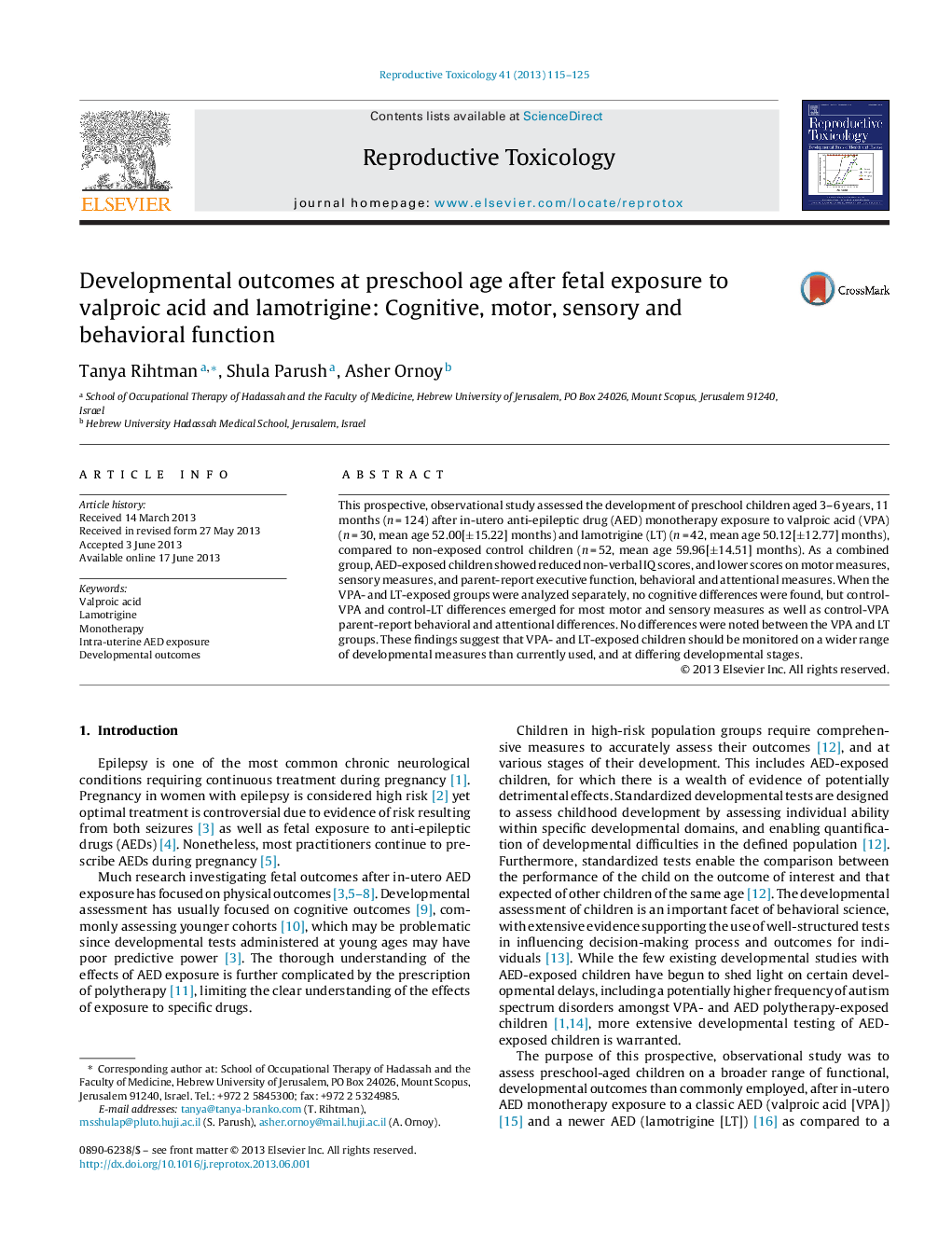| Article ID | Journal | Published Year | Pages | File Type |
|---|---|---|---|---|
| 5858791 | Reproductive Toxicology | 2013 | 11 Pages |
â¢VPA- and LT-exposed children appear to perform worse than control children on motor, sensory and behavioral measures.â¢While VPA-exposed children showed more impaired function, the deficits of LT-exposed children are not negligible.â¢Practitioners should monitor measures other than cognitive functioning after AED exposure, even at low doses.
This prospective, observational study assessed the development of preschool children aged 3-6 years, 11 months (n = 124) after in-utero anti-epileptic drug (AED) monotherapy exposure to valproic acid (VPA) (n = 30, mean age 52.00[±15.22] months) and lamotrigine (LT) (n = 42, mean age 50.12[±12.77] months), compared to non-exposed control children (n = 52, mean age 59.96[±14.51] months). As a combined group, AED-exposed children showed reduced non-verbal IQ scores, and lower scores on motor measures, sensory measures, and parent-report executive function, behavioral and attentional measures. When the VPA- and LT-exposed groups were analyzed separately, no cognitive differences were found, but control-VPA and control-LT differences emerged for most motor and sensory measures as well as control-VPA parent-report behavioral and attentional differences. No differences were noted between the VPA and LT groups. These findings suggest that VPA- and LT-exposed children should be monitored on a wider range of developmental measures than currently used, and at differing developmental stages.
